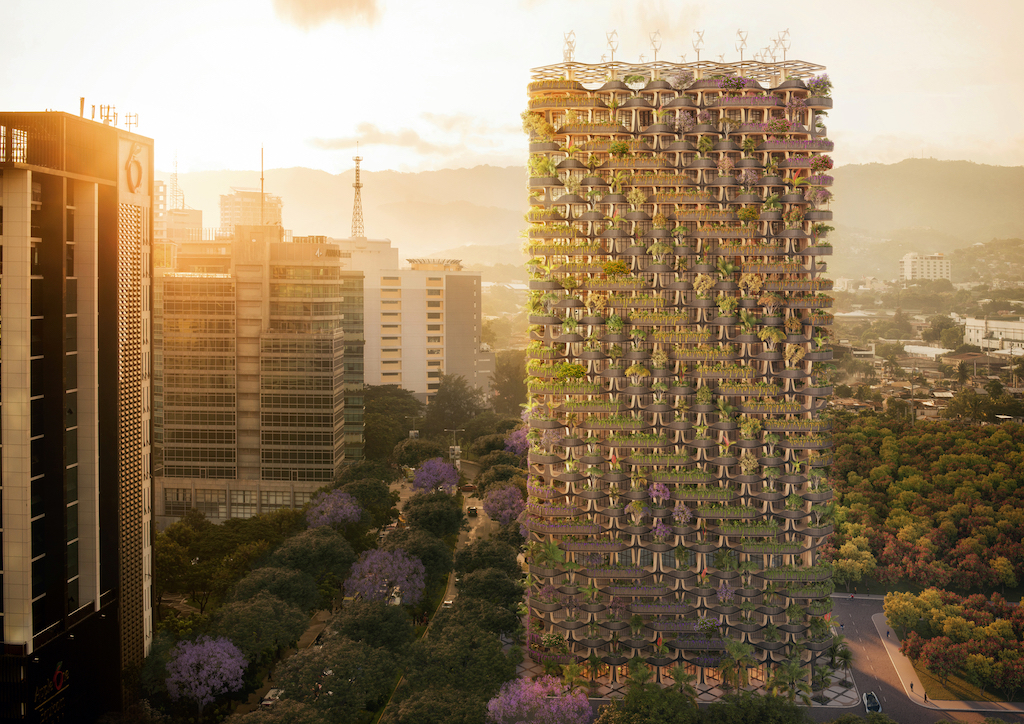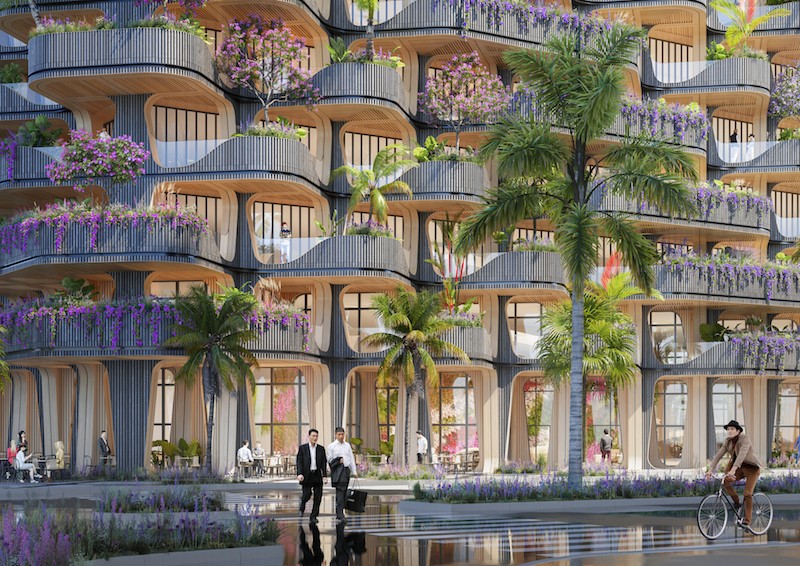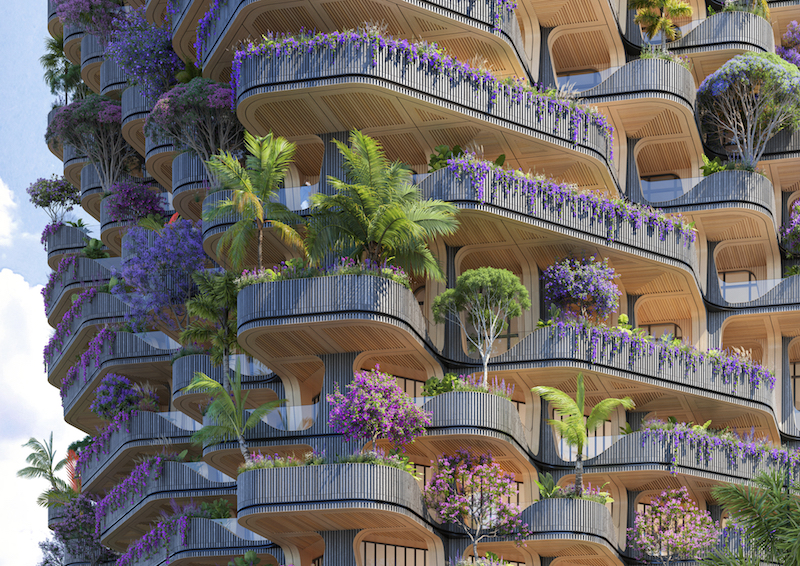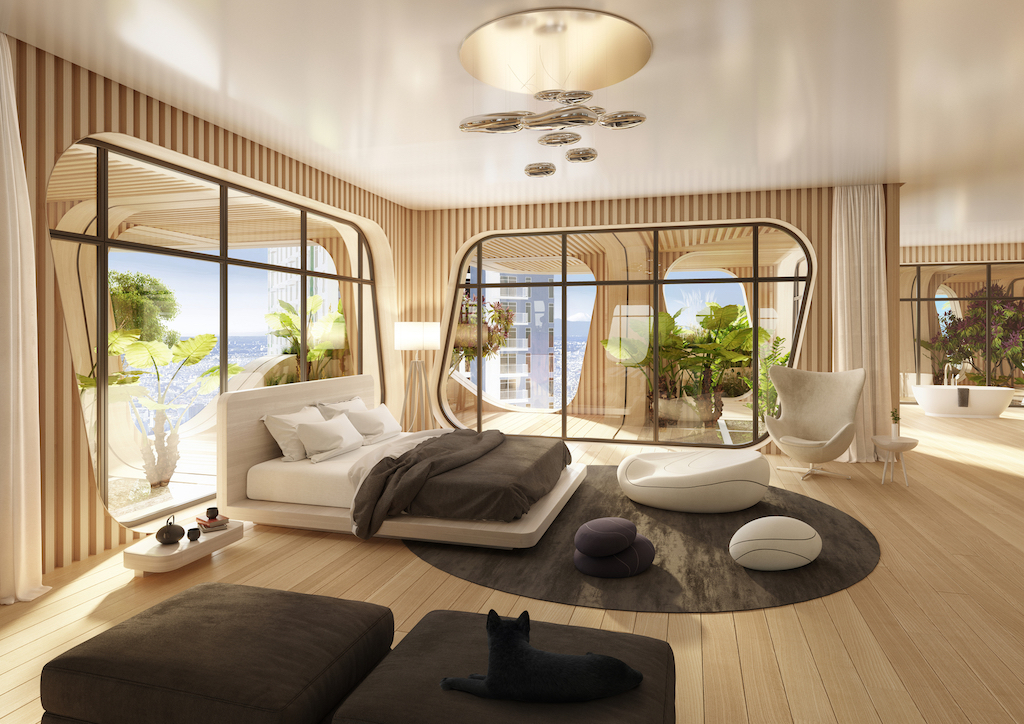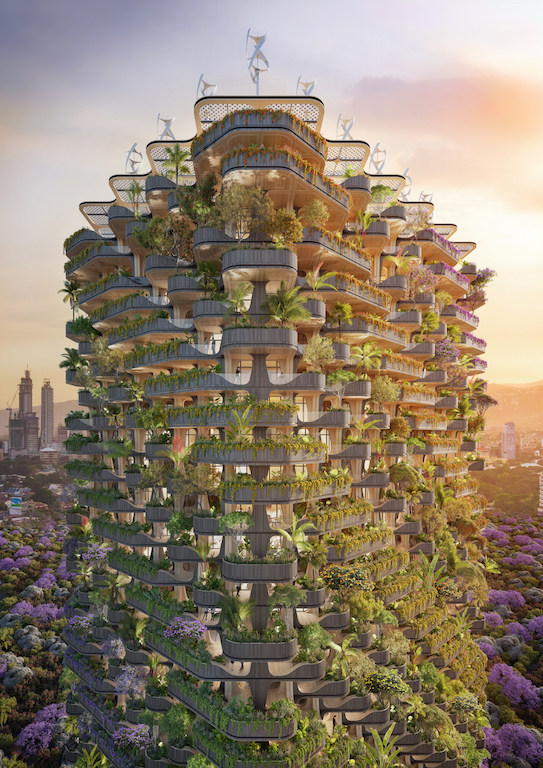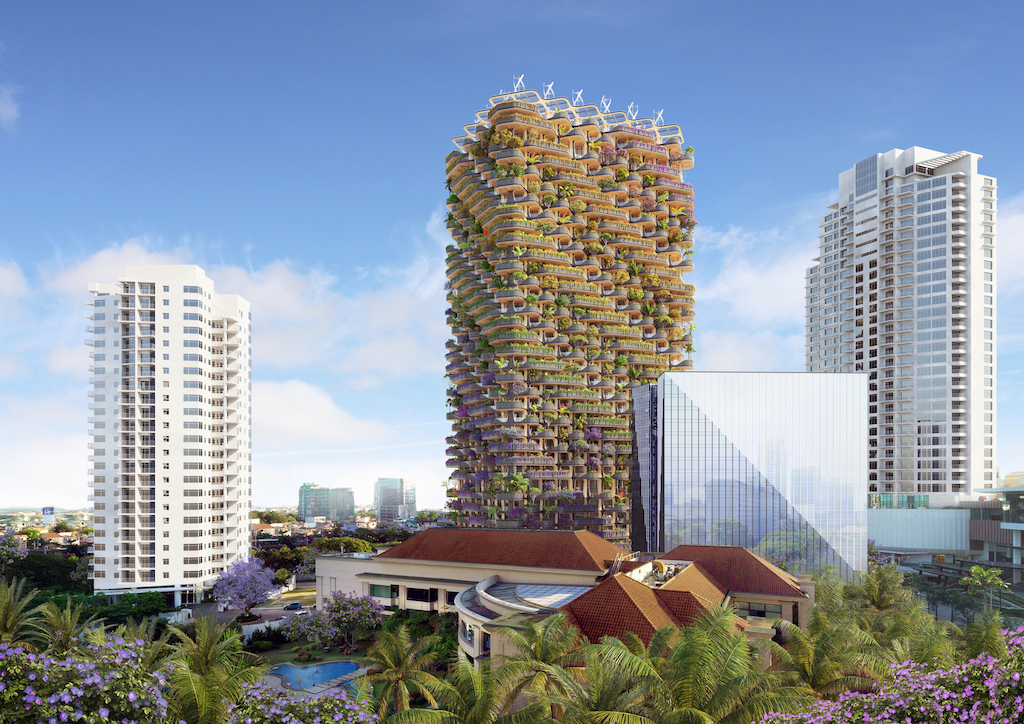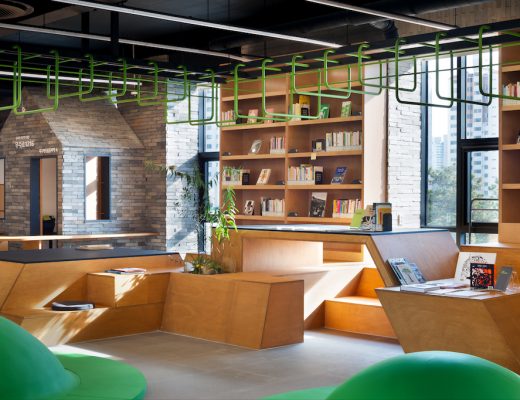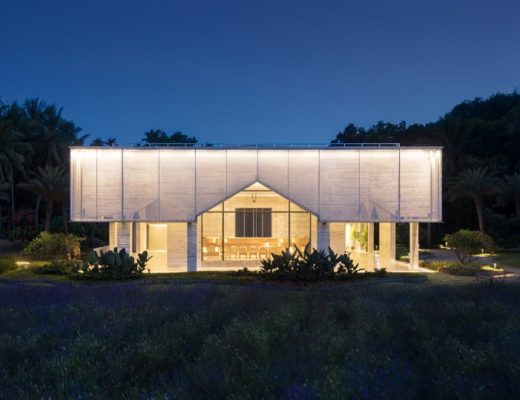Vincent Callebaut Architectures has revealed its concept for The Rainbow Tree, a modular mass timber condominium tower in Cebu City, the Philippines. Reflecting on the cultural and natural Filipino heritage, the project, named after an iconic and colourful tree from the Philippines the Rainbow Eucalyptus, was conceived to reduce the carbon footprint of the building.
Aiming to build a residential structure with the double environmental certification of LEED and BERDE, the project “offers the perfect balance between mixed cultural heritage and natural heritage of unparalleled splendour”. With notions of passive biophilic design and advanced renewable energy, The Rainbow Tree opts for a structure made of wood, the only natural, abundant, and renewable material, overlayed with more than 30,000 plants from the neighboring tropical forests.
“Our leitmotif is, therefore, to combine functionality and elegance by sublimating natural, simple, and traditional materials. The Rainbow Tree is a contemporary design architecture born from collective memory with clean curves tinged with a popular dimension, a collective ideal, and an ancestral imagination. It advocates the use and reinterpretation of the indigenous, colonial, and modern architectural and landscape styles that predominate or prevail in the city of Cebu.” — Vincent Callebaut Architectures.
Located in Cebu, one of the largest islands in the Philippines, holding the main maritime shipping port and the central economic business centre, the building is a 32-storey, 115-metre high tower built of solid wood. Inspired by traditional “Bahay Kubo” (a type of stilt house indigenous to the Philippines) homes, the modular mass timber tower stacks 1,200 prefabricated modules, each with sides measuring 4 meters and a height varying between 3.2 to 4.8 meters.
The construction technique used consists of overlaying perpendicularly wooden slats and connecting them together using structural, now-organic adhesives. Covered with a cladding of cedar planks burnt according to the ancestral Japanese method called Shou-Sugi-Ban, the building has a better resistance to fire, wood-eating insects, and fungi.
You might also like:
Asian projects and firms win big at 2019 World Architecture Festival
Construction begins on new smart green city in Philippines masterplanned by Broadway Malyan
One Za’abeel Tower in Dubai to have world’s longest cantilevered link between its two buildings
The building has a negative carbon footprint and takes on a flexible design for reversible programming. Comprising of a central core and an “exoskeleton” façade, the interior space is completely free and houses a restaurant, a co-working space, a pool, spa and fitness center, and an urban sky farm, The Rainbow Tree offers more than basic residential units to its inhabitants.
Integrating urban agriculture and renewable energies, The Rainbow Tree is a prototype of a completely bio-based vertical forest respecting the four pillars of the ecological city of the future, including energy self-sufficiency; greening of buildings and development of urban agriculture; soft mobility; and social innovation.

